Travels with Marwan: Days 3-5
Aruya, Pamongo, Nebbi, and Nyaravur
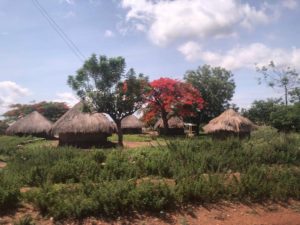 I apologize. I have not written these past three days. I know that I promised to write daily but I hope you forgive me when you finish reading this entry.
I apologize. I have not written these past three days. I know that I promised to write daily but I hope you forgive me when you finish reading this entry.
We have been working at least 14 hours each day, the four of us having developed a routine here in the Nebbi district. We get up at 6:30 in the morning and have a very quick, very basic breakfast with a small cup of Nescafe coffee to power us through the day (Starbucks has not made it to the corners of this world where the price of one Venti Macchiato can feed a whole family for months). Despite no hot water and the small amount of dribbling we are able to get from the showerhead, we all manage to wash up, the men are close shaven, and we are suitably and nicely dressed for the day when we meet for breakfast. We are each operating on a few hours of restless sleep though you would not know it when you look at our faces in the morning, ready and eager to begin our journey. We pile into the van and we drive from Aruya to whichever site we are visiting that day. We spend the whole day with the local administrators and clinical team. Then we hop in our van again and we begin the debrief among ourselves. We go straight to the other hotel that has the only restaurant we are told that we should go to for meals (Aruya, despite being a bigger town than Nebbi, is still not a town in an area that caters much to foreigners).
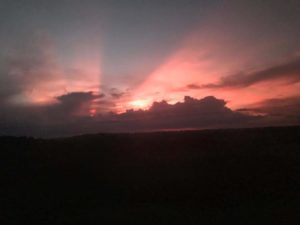
Over dinner, the discussion and the debrief continue. We usually wrap up about 8:30 pm and get to the hotel where we are staying by 9 pm. We go to our rooms and try to connect to the internet to get our regular U.S. work done. That continues to be challenging, however, given the weakness of the Wi-Fi and the constant black outs with no generator to bring the electricity back on at our hotel. Despite these long days and frustrating nights, we all seem to be really excited at the prospect that this pilot program could make a major impact on the health and wellbeing of the Ugandan population living with HIV.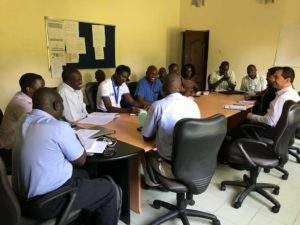
On the first day of site visits, before heading to Pamongo Health Center, we went to Nebbi and met with the Infectious Disease Institute (IDI) team, the implementing partner in this region. There, we were introduced to the IDI staff and reviewed the goals of the program briefly. We discussed the plans for the coming three days and how best to organize the site visits. We emphasized that we needed to make clear to the people we were going to meet that our visits are not formal assessments which they were used to but collaborative discussions with the teams on the ground looking specifically at viral suppression.
After the IDI meeting wrapped up and prior to heading to Pamongo, we now had to pass by the District Office of the Ministry of Health to meet with the head of the district. We quickly became very familiar with the important formalities that Ugandan customs dictate, not too dissimilar from many other African countries I would imagine. We would have to arrange a meeting with each authority in the area and inform them of our presence and our intentions. We would each sign a guest book; sometimes there would be more than one book going around the table that we each had to sign. Everyone would introduce themselves and then we would discuss the purpose of this program. We would wait for the authority in charge to give us the acknowledgement and approval we needed to proceed. This would have to happen at the district, the agency, and the site levels. In these meetings, all the leads of the various entities would be given time to speak, welcoming the group, discussing the project, and then giving closing remarks.
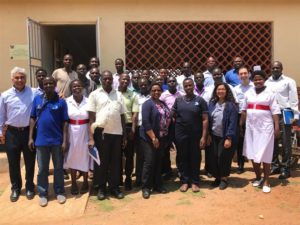 When we finally arrived at Pamongo, it was exhilarating since this was the first site we were visiting and we had been anticipating this moment for days. We convened in the ART clinic and the site leadership and the staff involved in HIV care were called to gather. We went through the formalities of introductions, reviewed what will happen in this visit, signed the guest books, and then we finally split up into groups to begin the real work on the ground. The clinicians who work at the ART clinic gathered with me in one of the clinic rooms— slightly bigger than a walk-in closet; Judy went off to the Prenatal clinic across the compound where the staff working with pregnant and breastfeeding mothers and young children are seen; and Mulamba stepped into the other clinic room at the ART clinic with the support staff involved in adherence counseling and outreach.
When we finally arrived at Pamongo, it was exhilarating since this was the first site we were visiting and we had been anticipating this moment for days. We convened in the ART clinic and the site leadership and the staff involved in HIV care were called to gather. We went through the formalities of introductions, reviewed what will happen in this visit, signed the guest books, and then we finally split up into groups to begin the real work on the ground. The clinicians who work at the ART clinic gathered with me in one of the clinic rooms— slightly bigger than a walk-in closet; Judy went off to the Prenatal clinic across the compound where the staff working with pregnant and breastfeeding mothers and young children are seen; and Mulamba stepped into the other clinic room at the ART clinic with the support staff involved in adherence counseling and outreach.
We spent the next several hours discussing barriers and challenges for patients and for the health workers. We reviewed what has been working for them and what has not. Before we knew it, the hours had gone by and we were ready to reconvene for the daily wrap up.
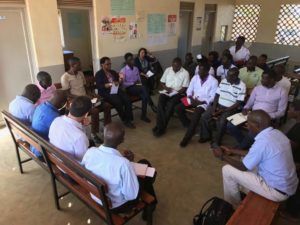
We worked straight through and no one stopped for lunch. We quickly learned that we needed to bring snacks with us to eat so that we would get through the day. We were told that the staff usually chose to eat when they were finished with work. What we realized later is that most of the staff could not afford lunch, very few brought food with them, and there was no place to get lunch at the centers. By the third visit, we caught on and brought snacks for everyone which was extremely appreciated.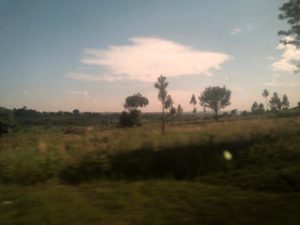
We met with one site each day,– the two smaller health centers (Pamongo and Nyaravur) and one large district hospital (Nebbi)– and the routine was the same. The health workers were welcoming and open with us. They were highly engaged and seemed genuinely appreciative. Themes emerged that were similar among the sites and there were some unique challenges specific to each site. There were, however, more similarities than differences. Perhaps surprisingly, perhaps not, some of these themes resonated with our experiences in the U.S. among the patient populations we see at the federally qualified health centers we work at —issues of stigma and discrimination, confidentiality and disclosure, transportation issues, missed appointments, and wait times. Looking at their processes and interventions that they have been working on sparked ideas and generated interventions we now wanted to implement at our health centers to help close the gap in care for those patient populations who have been the hardest to engage in care at our clinics.
We walked away impressed with the dedication of these amazing health workers including the peer expert clients who are essential members of the clinics. They work hard and care for the patients because of the love and compassion they have for their people and their country. They understand the struggles the patients have and are providing treatment to the best of their abilities despite the very limited resources available. They do this work because it is their calling, not for any glory. The parallels with the incredible colleagues we work with every day at our own community health centers were not lost on us.
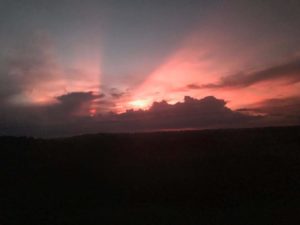
We also had a chance to speak to patients. Their appreciation for the care they receive, their resilience despite the hardships they face, and knowing how little they have and how much they struggle to get themselves and their families through a day is humbling and heartwarming and heartbreaking. These experiences have affected us profoundly, recalibrating our compasses, putting the world in perspective, and making our complaints about hotel amenities incredibly embarrassing and disgustingly petty.
Every late afternoon, on the drive back to our hotel in Aruya, we would share our experiences and our stories with each other. We would highlight what was working and what was not, what is needed and what realistically could be done. We would begin strategizing about what we will report as our recommendations, hoping that this project will lead to impactful changes for the patients and the healthcare workers.
We continued these discussions through dinner and came back to the hotel only to open up our laptops and write down our impressions in the reports we need to submit.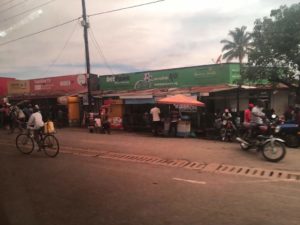
I am sure each of us on the team has their nighttime routine in their room by now. I would get ready for bed and try to pull the mosquito net completely around the bed and fail (a few days in, I finally stopped trying and figured I will have to rely on the malaria prophylaxis and DEET spray). I would try to connect to Wifi to answer emails and catch up on clinical work but that would end in futility. I was so exhausted, I welcomed the futility since it allowed me to put aside my guilt and go to bed. Most nights I tried to push to stay awake until past midnight so I could connect with my family half way across the world and say goodnight—some nights I was successful, most nights I have not been. We would get very restless sleep, managing a few hours before we got up again to head to the next clinic.
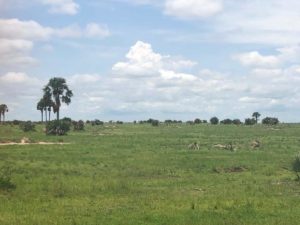 The images that played through my mind as I lay my head to sleep each night were of the vastness of the Ugandan sky stretching open in every direction you looked; the lusciousness of the vegetation that sprawled to the horizons; the intensity of the orange red sunsets that lit the sky on our way back to the hotel each day; the men and boys who worked in the heat and the rain cutting the wild grass with the blades they were swinging over their shoulders back and forth; the women and girls walking up and down the roads balancing on their heads baskets of bananas and mangoes and root vegetables to sell or the water containers they have to carry sometimes for miles to get to the nearest well; the men and women working the small
The images that played through my mind as I lay my head to sleep each night were of the vastness of the Ugandan sky stretching open in every direction you looked; the lusciousness of the vegetation that sprawled to the horizons; the intensity of the orange red sunsets that lit the sky on our way back to the hotel each day; the men and boys who worked in the heat and the rain cutting the wild grass with the blades they were swinging over their shoulders back and forth; the women and girls walking up and down the roads balancing on their heads baskets of bananas and mangoes and root vegetables to sell or the water containers they have to carry sometimes for miles to get to the nearest well; the men and women working the small  plots of land growing their crops; and the beautiful faces of the patients and the clinic workers I met that day who expressed their thoughts with few uttered words and with their mesmerizing eyes conveyed what was deep in their hearts.
plots of land growing their crops; and the beautiful faces of the patients and the clinic workers I met that day who expressed their thoughts with few uttered words and with their mesmerizing eyes conveyed what was deep in their hearts.